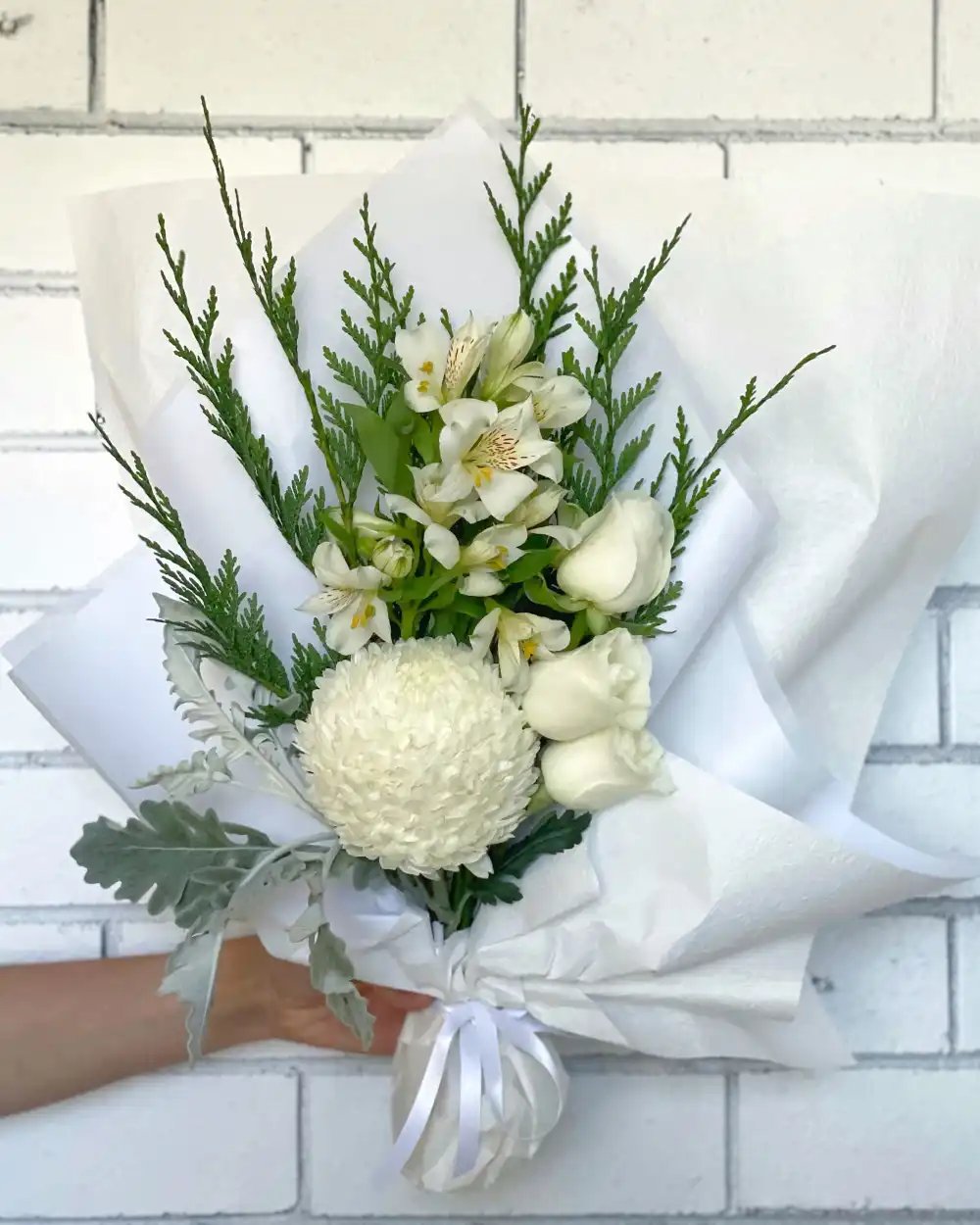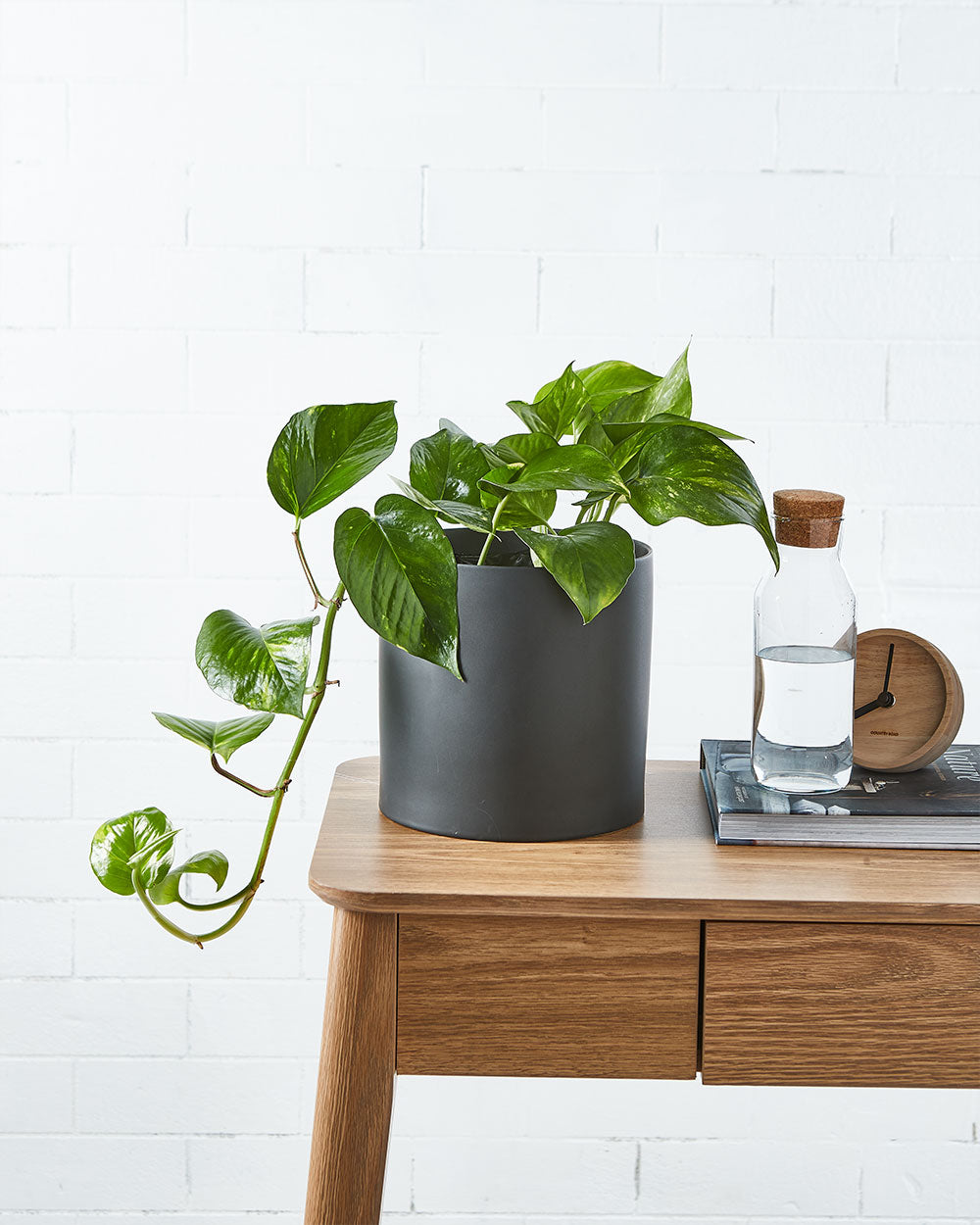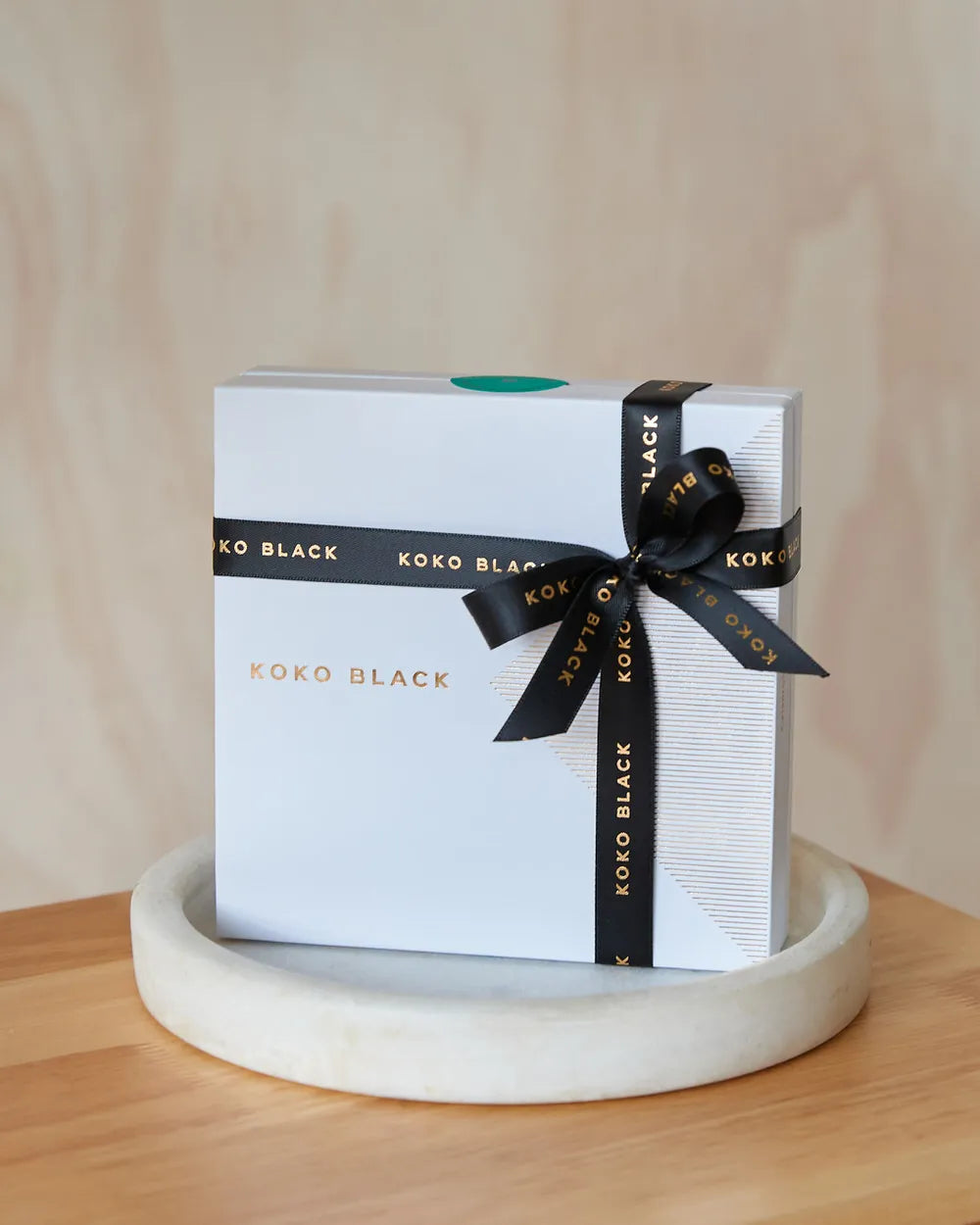When you pour so much love, care and attention into your houseplants, it can be really upsetting to see issues arising. But even the most diligent plant parents come across some ill-health with their Monsteras – so don’t panic if you think you’ve done everything right in your plant care! Read everything you need to know about common Monstera problems and how to solve them!
A lot of common difficulties are due to slight imbalances in watering, sunlight or feed, and are therefore easily remedied. To give you a full guide to rectifying the most common Monstera problems, we’re answering frequently asked Monstera questions, giving you simple ways to bring your plant back to a clean bill of health.
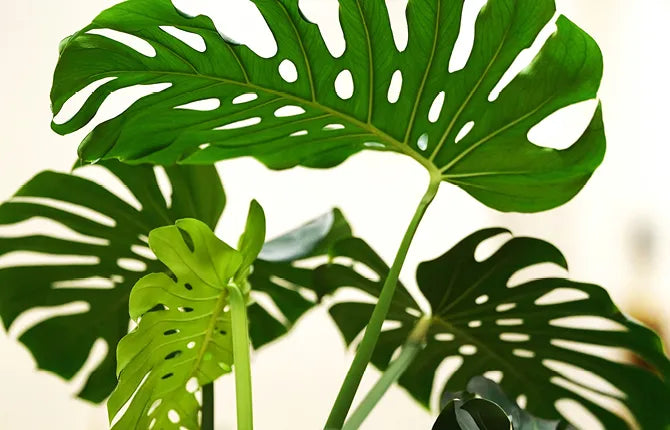
What am I doing wrong with my Monstera plant?
A happy and healthy Monstera proudly displays deep green, waxy leaves with fenestrated (split) leaves. Put simply, there will be clear signs that your plant is unhappy.
You should see the first signs of ill-health in the leaves. Wilting, curling at the edges, yellowing, turning crispy and brown at the edges… These are just some issues that you might come across. While Monsteras are generally pest-free, keep an eye out as mealybugs and thrips will sometimes come out to play. You do also want to monitor stem health – if they’re turning black there’s definitely something wrong there!
Do these problems sound familiar? Here’s how you can fix them.
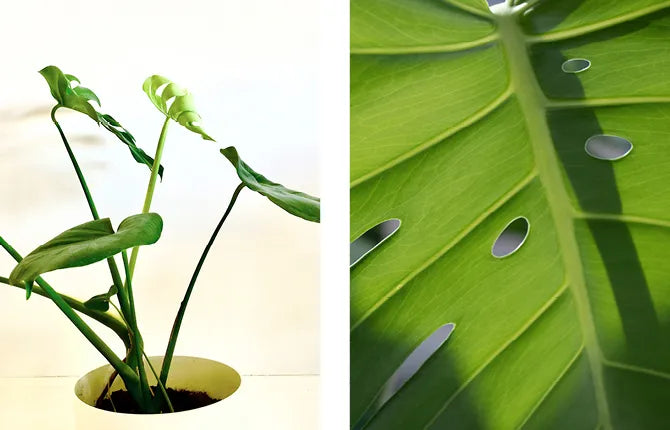
Why is my Monstera leaf curling?
This is typically a clear sign that you’re underwatering your plant, or not giving them enough humidity. But it can also be due to overwatering, pest infestations or heat stress! Take a closer look at your plant and its soil to diagnose, and treat it accordingly.
Why are my Monstera’s leaves not splitting?
The Monstera plants that we all know and love are filled with fenestrations, which is why they have affectionately been named Swiss Cheese Plants.
If your leaves aren’t splitting, it could be for a number of reasons. Firstly, if you’re dealing with a young plant, it could simply be a case of being patient. Splits in leaves will generally occur in more mature plants, so when you first take on a fledgling, its heart-shaped leaves will likely remain intact for some time.
It could also be a sign, however, that your plant isn’t loving its home. Assess its sunlight and water levels, and adjust accordingly. You should then find that when your plant is happier, new leaves will grow – fenestrations and all.
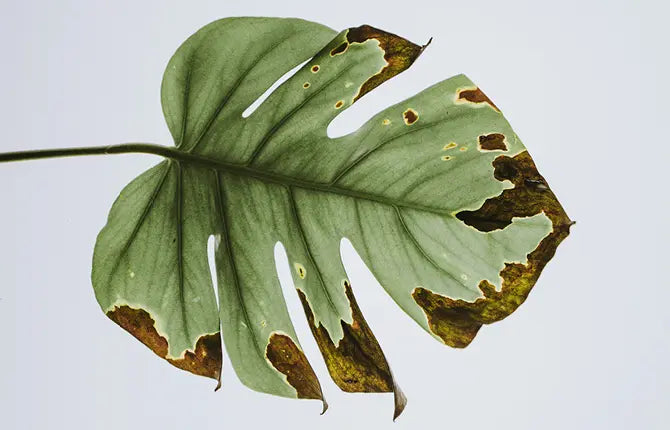
Why does my Monstera have brown tips?
If your Monstera is getting brown at the tips, it’s often due to a low humidity issue. Moving it to a room with lots of moisture such as a bathroom or kitchen can be a great solution for this. But if that’s not possible, a cheap, quick and easy way to curb the crusty tips is by using a misting bottle once a day. Lightly dust the leaves with mist, until the problem is solved. Doing this in the long term can encourage pests and infections, so only use it when you need to.
If you’re able to splash some cash, almost all houseplants will benefit from a humidifier – so it’s worth the investment! Use them throughout the winter months to keep your houseplant health optimal. They produce steam consistently to add extra humidity to the air – great for those of us that love more tropical climates too!
It could also, however, be due to the soil drying out too much, too much watering or if you’ve not been very consistent with your watering! So before upping the humidity levels, evaluate your watering routine, and aim to rectify it that way first. Make sure that when you come to water your Monstera, you water it thoroughly, and never let the entire soil dry out before its next drink.
Why do Monstera leaves turn yellow?
A mature and healthy Monstera will have beautiful, deep green leaves. If your plant is younger or it’s a brand new leaf, however, don’t fret if it’s slightly lighter in colour.
Yet, yellow tones are not a good sign. Like many other issues with Monstera health, the yellowing of leaves can be for many reasons. The most common cause is overwatering or an inconsistent watering schedule. Overwatering puts your plant under a lot of stress, and can also cause root rot, and finally even kill your plant. Avoid this by withholding the watering until the top 2 or 3 inches of soil in the pot are dry. Make sure that you create a routine around this, as yo-yoing from sodden soil to desert dry will also put strain on your plant.
Why is my Monstera ripping?
While we want to encourage natural fenestration of the leaves, rips in the plant are not a good sign. Monstera plants can be prone to physical damage to the leaf, particularly if your plant’s environment isn’t humid enough. In drier conditions, your Monstera leaves won’t be as robust and may rip if bumped into, or brushed past.
So, up the humidity, and be delicate with your plant while it heals. Luckily, this ‘mechanical damage’ doesn’t cause any long-term damage to the plant, and will likely heal over depending on the size of the tear.
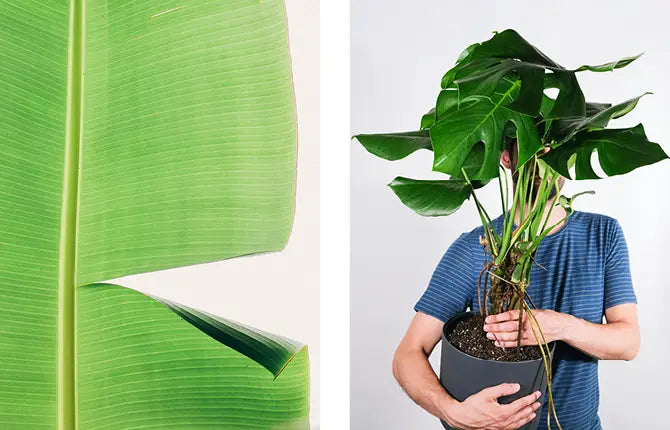
Should I cut off damaged Monstera leaves?
If your leaves are showing significant damage, you should absolutely cut them off! Chop back any leaves that have a lot of black or brown on them, as it can’t heal these areas, and they’re also no longer producing any energy for the plant. They’re also more appealing to bacteria and fungi and are weaker to rot and infection. It’s not worth keeping these parts of an otherwise healthy plant! Use a sharp tool, and make sure to cut at the base of the stem.
If your Monstera simply has brown tips or edges to its leaves, they’ll still be producing energy through photosynthesis, so don’t hack it all back. Cut the brown parts of the leaf off, whilst trying to maintain the shape of the leaf by emulating the natural shape of the tip.
Why is my Monstera so leggy?
If your Monstera is growing long-legged stems, it’s because it’s stretching to reach the sunlight! Naturally, Monsteras will do this in their natural tropical forest habitat if they’re not receiving enough light under the canopy.
Move your plant to a different spot in your home where it will get indirect sunlight throughout the day. Rotate your plant every so often to encourage the same growth on all sides. You might also want to check its feeding schedule and temperature. Hotter climates and too much food can also encourage abnormal growth spurts. While you might think this is a good thing, it often leads to a weaker plant that will be more easily damaged.
Monstera problems solved!
You should hopefully have all of your questions answered! Go and get your hands on a brand new Monstera for yourself or a friend today. Or shop other indoor houseplants now.




